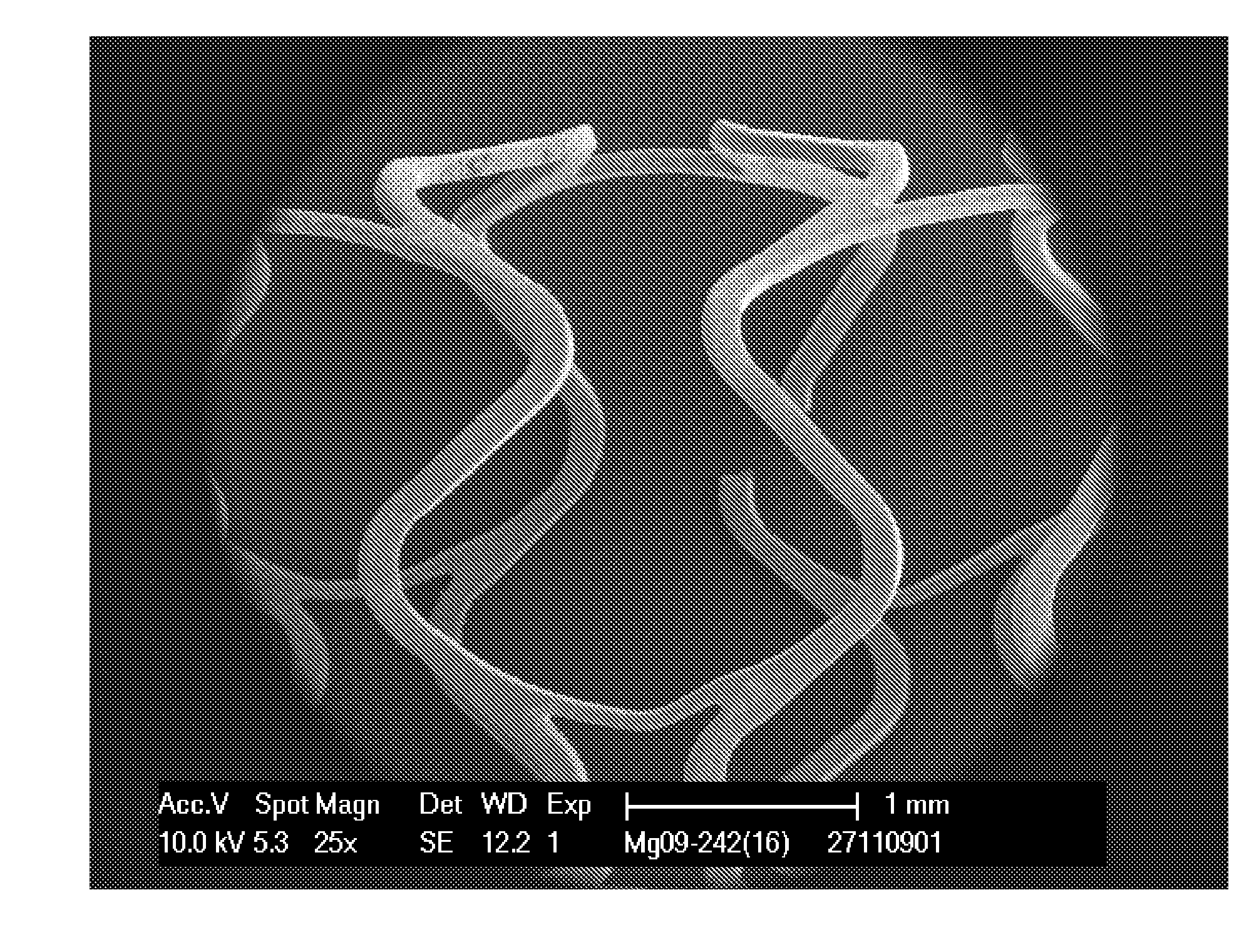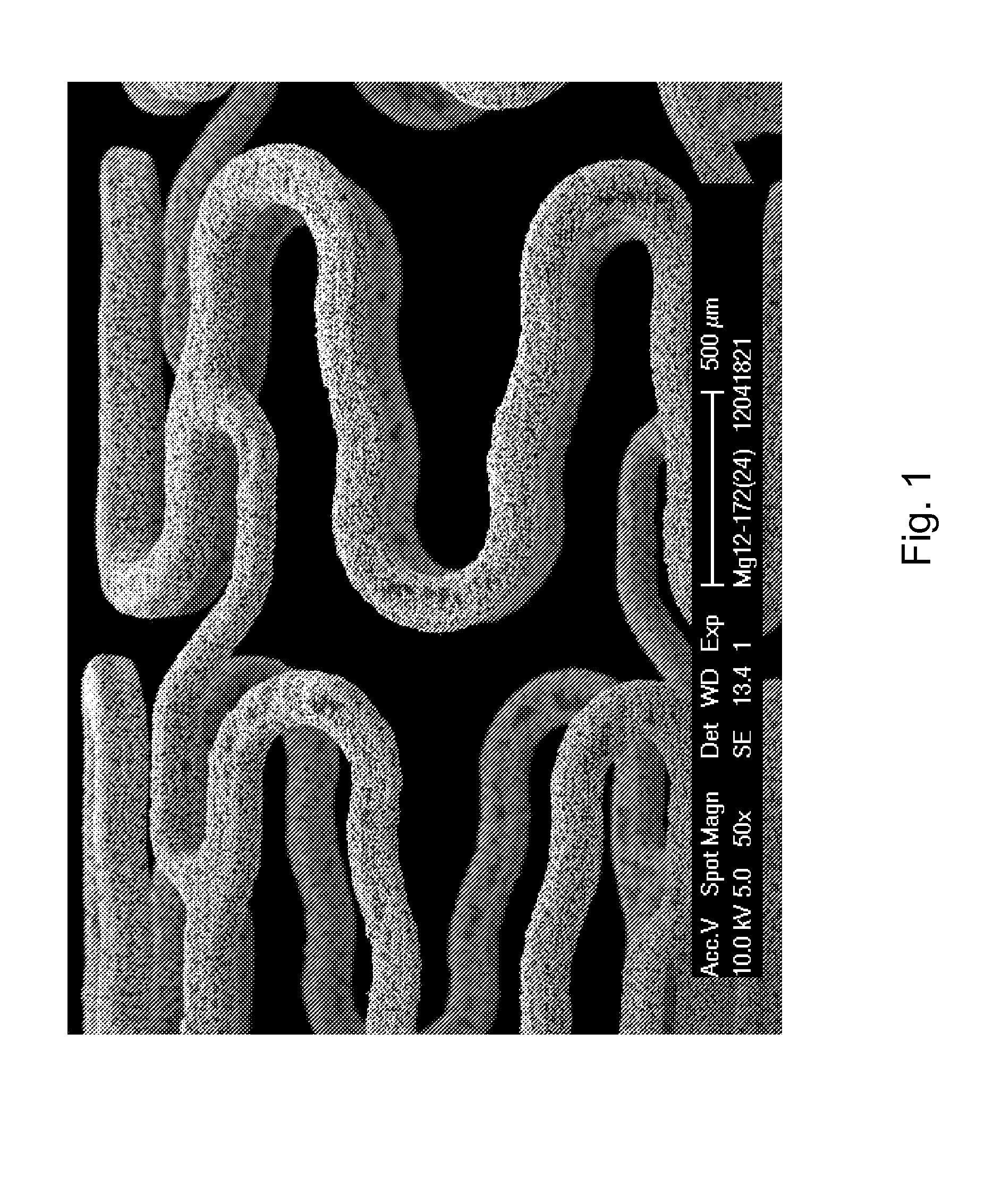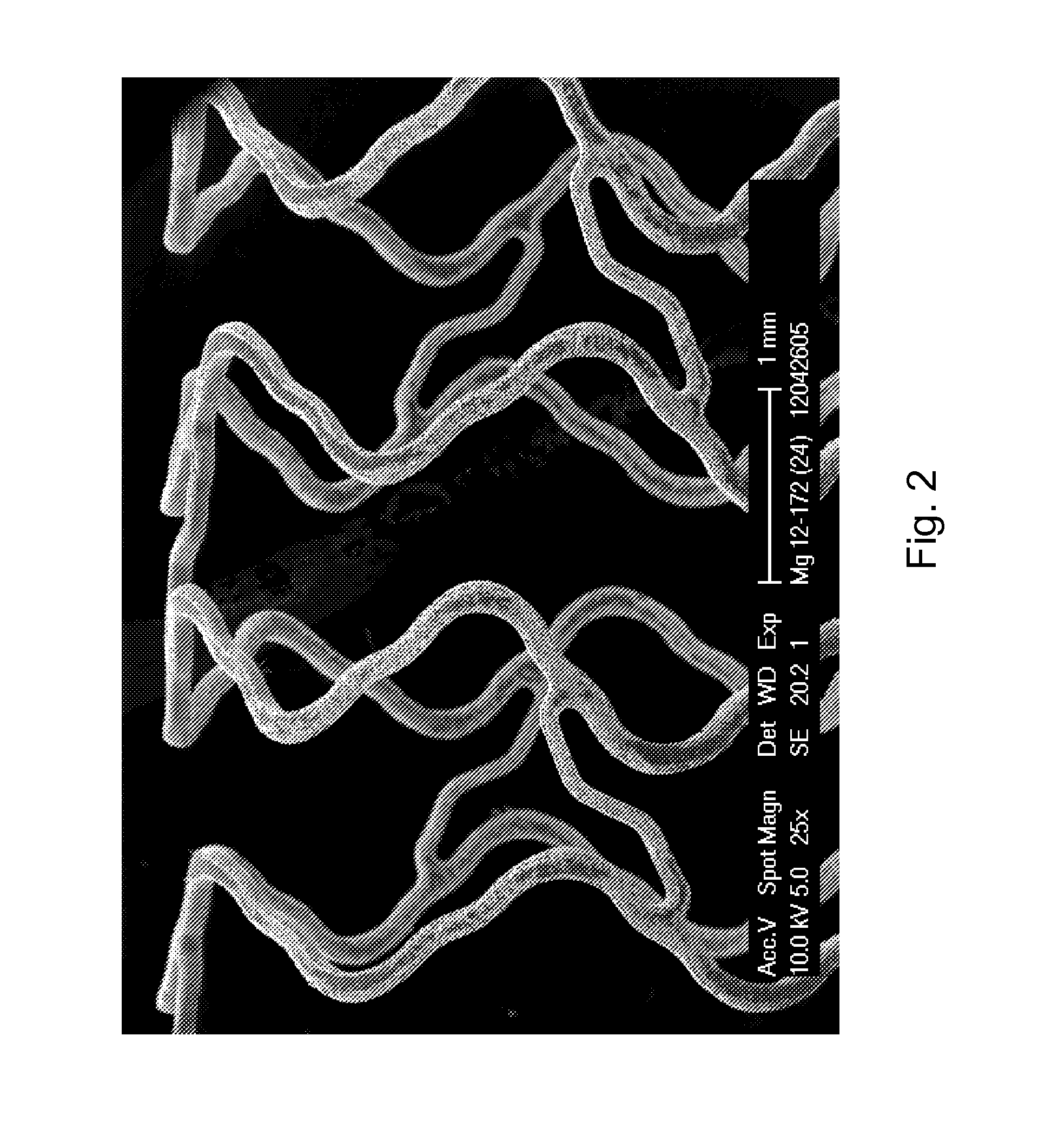Microstructured Absorbable Implant
- Summary
- Abstract
- Description
- Claims
- Application Information
AI Technical Summary
Benefits of technology
Problems solved by technology
Method used
Image
Examples
Embodiment Construction
[0040]The invention thus relates to a method for producing a microstructured surface from a bioresorbable magnesium alloy, preferably containing zinc and / or aluminum, characterized in that a surface of a bioresorbable magnesium alloy is treated with a pickling process and an electropolishing process, preferably by a combined pickling and electropolishing process, wherein[0041]a) the surface to be treated comprises or consists of a grain structure having a mean grain size of ≦10 μm, preferably of ≦7 μm, and still more preferably of ≦5 μm, a bioresorbable magnesium alloy, containing magnesium as the major constituent and zinc and / or aluminum as the main alloying elements, preferably containing zinc as the main alloying element; and wherein[0042]b) the magnesium alloy comprises or consists of a composition containing[0043]magnesium in a quantity of 78.0 to 98.99% by weight, preferably 88.5 to 96.9% by weight, still more preferably 91.8 to 95.8% by weight, and most preferably 94.0 to 95...
PUM
| Property | Measurement | Unit |
|---|---|---|
| Length | aaaaa | aaaaa |
| Length | aaaaa | aaaaa |
| Length | aaaaa | aaaaa |
Abstract
Description
Claims
Application Information
 Login to View More
Login to View More - R&D
- Intellectual Property
- Life Sciences
- Materials
- Tech Scout
- Unparalleled Data Quality
- Higher Quality Content
- 60% Fewer Hallucinations
Browse by: Latest US Patents, China's latest patents, Technical Efficacy Thesaurus, Application Domain, Technology Topic, Popular Technical Reports.
© 2025 PatSnap. All rights reserved.Legal|Privacy policy|Modern Slavery Act Transparency Statement|Sitemap|About US| Contact US: help@patsnap.com



